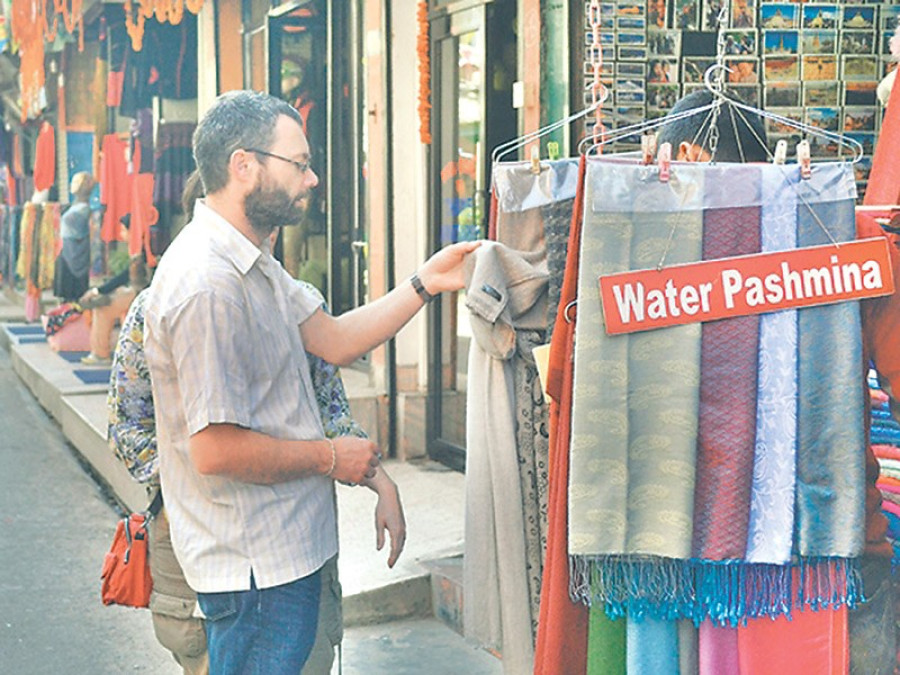Money
Pashmina export revenues falling despite government incentives
Pashmina export revenues are going downhill even though the government has given the sector high priority because it is one of the country’s major export earners, said government officials at a programme on Friday.
Rajesh Khanal
Pashmina export revenues are going downhill even though the government has given the sector high priority because it is one of the country’s major export earners, said government officials at a programme on Friday.
Products made of the fine wool have been identified as one of the major export items in the Nepal Trade Integration Strategy 2016, a government programme to boost exports. The government has been providing cash incentives of 3-5 percent to exporters of products listed as having high export potential.
The government also provides cash support to register the Chyangra Pashmina collective trademark in foreign countries. The brand has been registered in 47 countries so far, as per the Nepal Pashmina Industries Association.
Despite government support, pashmina shipments have been declining every year. According to Nepal Rastra Bank records, export revenues stood at Rs2.45 billion in fiscal 2016-17, which came down to Rs2.28 billion in fiscal 2017-18. Shipments in the first eight months of fiscal 2018-19 ending mid-July were valued at Rs1.52 billion, down 1.14 percent year-on-year.
Sharad Bickram Rana, executive director of the Trade and Export Promotion Centre, said there was a need to rigorously review the business process of Nepali pashmina to analyse the benefits the country has been receiving from the investment made in the sector. “With failing to enhance the backward linkage of the product, the investment has failed to yield good return from the sector,” said Rana.
According to the association, almost all the pashmina yarn needed to manufacture the product is imported mainly from China. Manang, Mustang and Dolpa districts are the largest producers of pashmina among the 14 districts in the country where this product is made. These three districts can produce at least 4 tonnes of pashmina annually.
Rana highlighted the need to transfer export earnings to the grass roots level. “Apart from promoting the product by branding, traders should focus on improving the design and quality to boost exports,” he said.
Durga Bikram Thapa, president of the Nepal Pashmina Industries Association, said counterfeit products were currently a major worry for the industry.
“A number of unscrupulous traders have been selling shawls made of viscose and polyester under the brand,” said Thapa. He gave the example of Nepal’s woollen carpet industry which went from boom to bust in the last decade due to the failure to maintain quality.
Thapa said fake goods were being sold mainly in key tourist centres like Thamel, Kathmandu. According to him, a government team led by the Trade and Export Promotion Centre inspected the area six months ago and uncovered widespread sales of fake pashmina shawls under the Chyangra Pashmina brand. “There is a need to develop strict measures to check such malpractices to protect the sector,” he added.
The pashmina industry also receives aid from international organisations such as the World Bank and the International Trade Centre, a multilateral joint agency under the World Trade Organisation and the United Nations. The World Bank is investing $115 million in livestock production including chyangra farming under its Nepal Livestock Sector Innovation Project for 2017-23.
The International Trade Centre provided $1.8 million to improve the quality of production and design and promote the collective trademark Chyangra in the international arena through its Pashmina Enhancement and Trade Support project. The project lasted from 2014 till 2017. It was supposed to extend the second phase of the project, but is reluctant to do so due to the slow progress of the Nepali pashmina sector, said stakeholders.




 8.12°C Kathmandu
8.12°C Kathmandu













